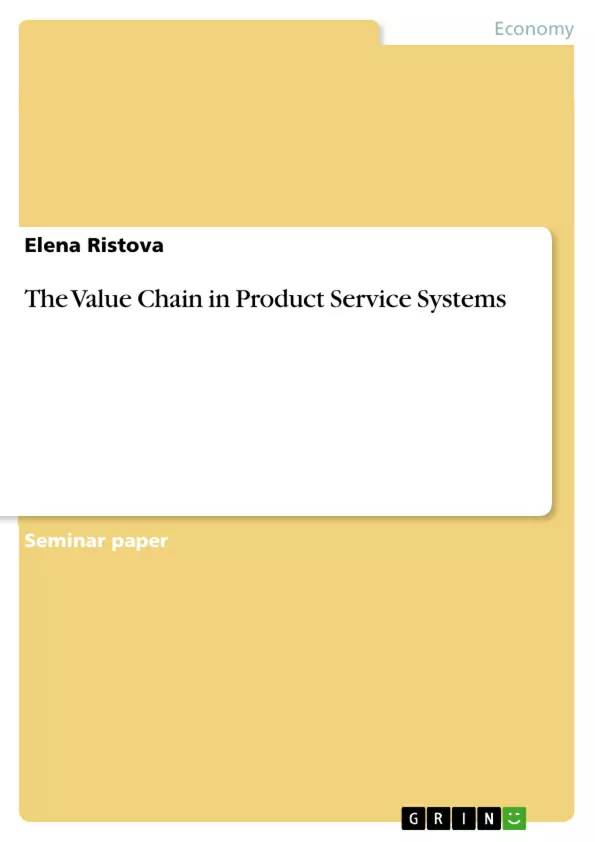This paper explains the general structure of a (global) value chain and sets it into the context of product-service systems. Furthermore, it evaluates benefits and disadvantages of product-service systems and their impact on the value creation and on finances, identifying cost savings and inevitable occurring costs.
Nowadays, companies, especially product-grounded companies, face increasing competition. Companies underlay fundamental shifts in the value creation process. In the past, the focus was on the sale of a product or service, whereas today it is the customer with his needs and wishes.
It gets more difficult to differentiate products from the products of one’s competitors, as anyone can build products with comparably good quality. Therefore, the commodity trap appears, meaning that the customer’s perceive products as exchangeable. Hence, companies need to reconsider their business models and react to the inevitable competition. A possible solution is to rethink their business models and implement a more service-oriented perspective in their range of products.
Inhaltsverzeichnis (Table of Contents)
- Introduction
- Value Chain
- Corporate Value Chain
- Global Value Chain
- Product-service systems
- Classification of Product-Service Systems
- Servitization and Product-Service Systems
- Value Creation of Product-Service Systems
- The shift of the Value Chain – from a Product Driven to an Open Services Value Chain
- Financial Impacts
- General Cost Drivers in a Value Chain
- Costs-Consideration on Value Chains of Product Service Systems
- Conclusion
Zielsetzung und Themenschwerpunkte (Objectives and Key Themes)
This assignment explores the concept of product-service systems and their impact on the value chain, specifically focusing on the financial implications. It aims to provide a comprehensive overview of the value chain, including both corporate and global perspectives, and then delve into the specificities of product-service systems, exploring their classification, servitization, and value creation mechanisms.
- The evolution of value creation and the shift towards service-oriented business models
- The structure and components of the value chain, both corporate and global
- The role of product-service systems in enhancing competitiveness and value creation
- The financial impacts of implementing product-service systems, including cost drivers and considerations
- The benefits and drawbacks of product-service systems in relation to finance and value creation
Zusammenfassung der Kapitel (Chapter Summaries)
The introduction establishes the context of increasing competition faced by product-oriented companies and highlights the need for a shift towards service-oriented business models. It emphasizes the importance of product-service systems as a means to regain competitiveness and enhance value creation.
Chapter 2 defines the concept of the value chain as developed by Michael Porter, outlining its core components and applications. It further explores the distinction between corporate and global value chains, providing a foundational understanding of the value creation process.
Chapter 3 focuses on product-service systems, delving into their classification, the process of servitization, and the value creation mechanisms associated with these systems. It also examines the transition from product-driven to open services value chains.
Chapter 4 analyzes the financial implications of product-service systems, discussing general cost drivers in value chains and specific cost considerations relevant to product-service system implementation. The chapter aims to provide insights into the financial benefits and drawbacks of adopting this business model.
Schlüsselwörter (Keywords)
The key themes of this document revolve around value chain analysis, product-service systems, servitization, cost drivers, financial impacts, and competitive advantage. The document explores the implications of shifting from a product-centric to a service-oriented business model, emphasizing the crucial role of product-service systems in achieving financial value creation and enhancing competitiveness.
- Quote paper
- Elena Ristova (Author), 2017, The Value Chain in Product Service Systems, Munich, GRIN Verlag, https://www.grin.com/document/703076



